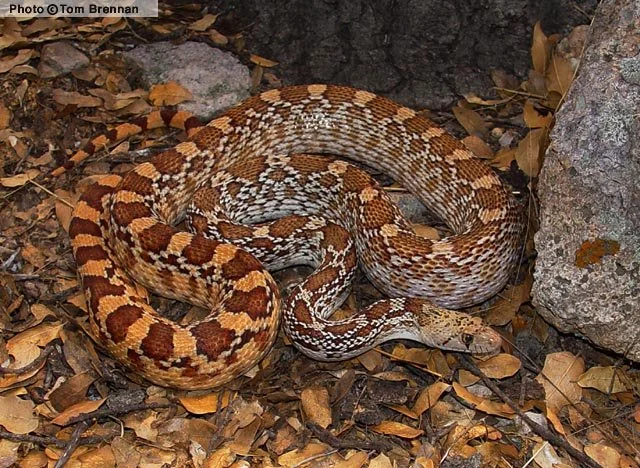Gopher Snakes are Friends of LV Ranch!
Submitted by Linda J. Turner
It is the time of year when snakes seek our roads for warmth after a cool night. Nonvenomous gopher snakes are often seen and mistaken for rattlesnakes. We value our gopher snakes, which feed on mice, pack rats, and gophers. Don’t run them over. Let them live!
The following information is from https://www.livescience.com/53484-gopher-snake.html:
Confusion with Rattlesnakes
“Many people mistake gopher snakes for rattlesnakes,” said Viernum. Both have splotchy dark markings on their backs, yellow or brownish coloration and large heads. They are both known to hiss loudly, vibrate their tails and flatten their heads when threatened, Viernum said.
This is a defense mechanism, designed to ward of potential predators. “This type of mimicry, where a harmless species mimics a harmful species, is known as Batesian mimicry,” said Bill Heyborne, a herpetologist and professor of biology at Southern Utah University. While it may be helpful in keeping predators away, Batesian mimicry can cause problems for gopher snakes. Humans often kill them thinking they are venomous rattlers. Viernum offered some ways to tell gopher snakes from rattlesnakes:
· Gopher snakes are typically longer than rattlesnakes. They are also slimmer and not has heavy-bodied as a rattlesnake.
· When not flattened out, a gopher snake’s head is narrow and rounded.
· Like the majority of nonvenomous snakes in the United States, gopher snakes have rounded pupils and not vertical, cat-like pupils of rattlesnakes.
· Gopher snakes also do not possess the heat-sensing facial pits like rattlesnakes and other pit vipers.
· Gopher snakes do not have rattles on the end of their tales, but this may be hard to determine when they are rapidly vibrating their tails.
If you are unsure of the species, Viernum suggests leaving any snake alone. You don’t want to risk injuring yourself or the snake. Gopher snakes are nonvenomous but can still inflict a painful bite.
